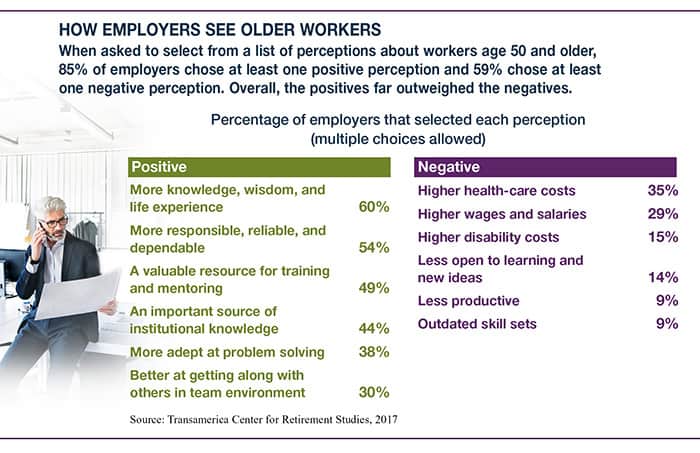
In late 2014, the federal government launched a formal phased retirement program that allows eligible employees to work part-time in their positions while collecting half of their salary and half of their pension.
Typically, at least 20% of their remaining work hours must be spent mentoring younger workers. And their pensions continue to grow based on part-time work.1
This kind of arrangement can make it less stressful to transition into retirement, and it benefits employers by leveraging the knowledge of experienced employees. However, private industry has been slow to adopt similar programs, despite widespread employee interest. A 2017 survey found that almost half of large employers believe many of their employees want a phased retirement program, but only 31% of employers allow full-time workers to switch to part-time, and only 24% allow them to transition into retirement through a less stressful or demanding position.2
Another study found that only 6% of employers offered a formal phased retirement program in 2017. However, 13% offered an informal program that provided flexibility to negotiate with specific employees. While the number of formal programs remained flat from 2013 to 2017, the percentage with informal programs has grown steadily.3
Build Your Own Program
If your company does not offer a phased retirement program, you might suggest an arrangement. Emphasize what you can continue to contribute and how it could help the company in the present and the future. But also be sure that the program will really work for you. Here are some ideas to keep in mind.
- Make sure you understand the effect of reduced hours on your benefits, such as health insurance and employer pension or retirement plan contributions.
- The federal program includes a half pension with part-time wages, but pensions are less common in private industry, so you may have to use other sources to supplement the lost income.
- If you claim Social Security before full retirement age (FRA) and continue to work, you will receive a permanently reduced benefit (for claiming early) and will be subject to the retirement earnings test, which may temporarily reduce your benefit payments until you reach FRA. Once you reach FRA, any earnings will not affect your Social Security benefits.
- A moderate phaseout program, such as working four days instead of five, might allow you to try living on 80% of your income without tapping other sources, which could be good practice for retirement.
- If you do phase out of your current job, make sure you don’t end up trying to do all of your former work in fewer hours!
Take a Test Run
If a phased retirement is not available or appropriate for your situation, you might test the waters by living on your projected retirement budget for six months or a year before making the decision to retire.
You could even set up two separate bank accounts: one for the expenses you anticipate in retirement and another for expenses that you may no longer have when you retire (for example, commuter expenses or a mortgage that you expect to pay off). Put only the amount of retirement income you expect to have into the “retirement account” and see whether you can live comfortably on that income. If not, you might have to adjust your spending or work longer to increase your savings and Social Security benefits.
If you plan to move to a different part of the country when you retire, it may be difficult to simulate your retirement lifestyle while maintaining your current job. In that case, you might take an extended vacation and try living for a time in your planned retirement community.
Retirement should be a time for fun, relaxation, and new experiences after a long working career. By phasing out or trying a practice run, you may be more comfortable as you move into a new stage of your life.

